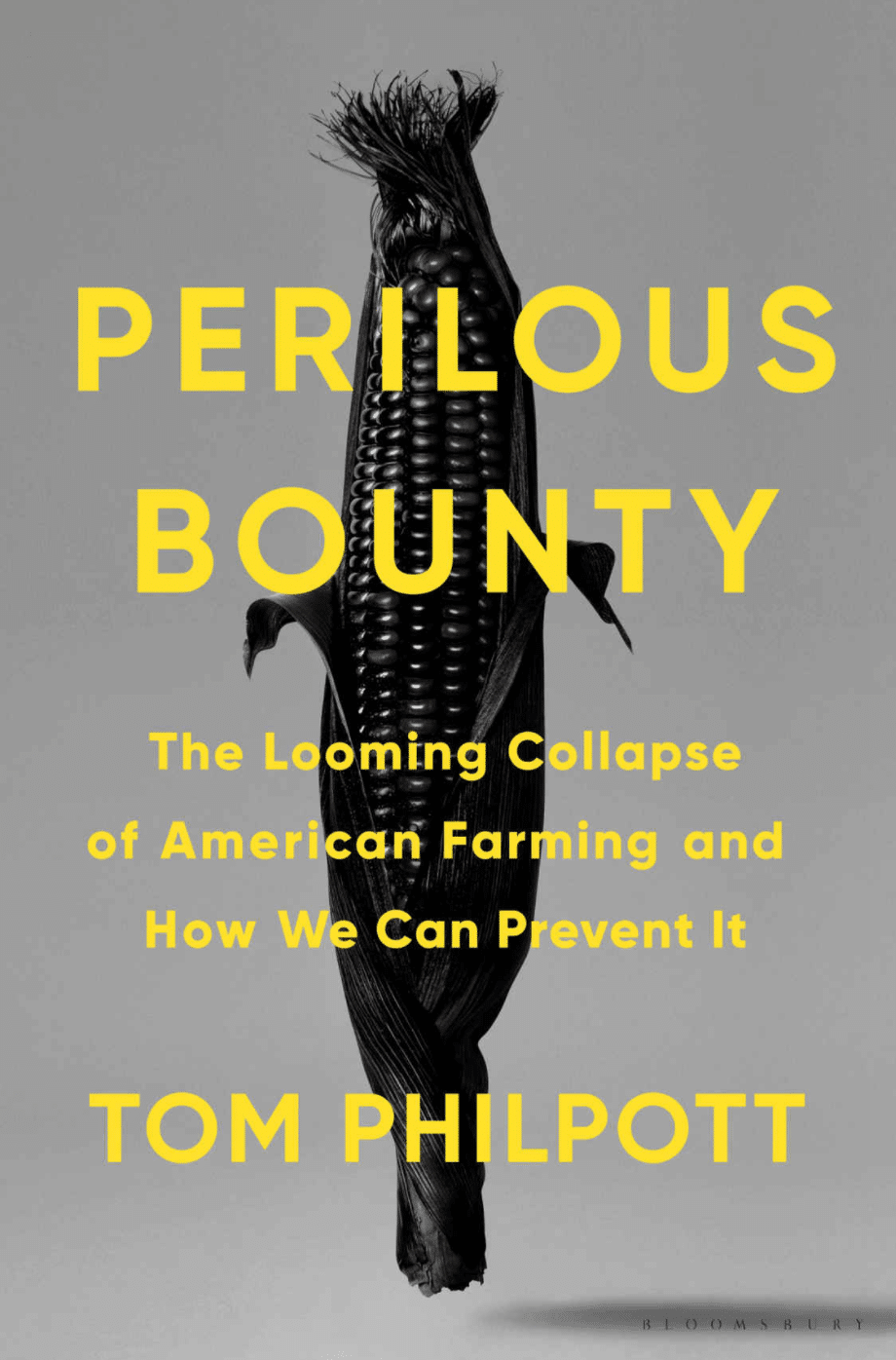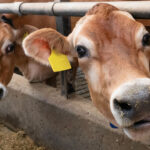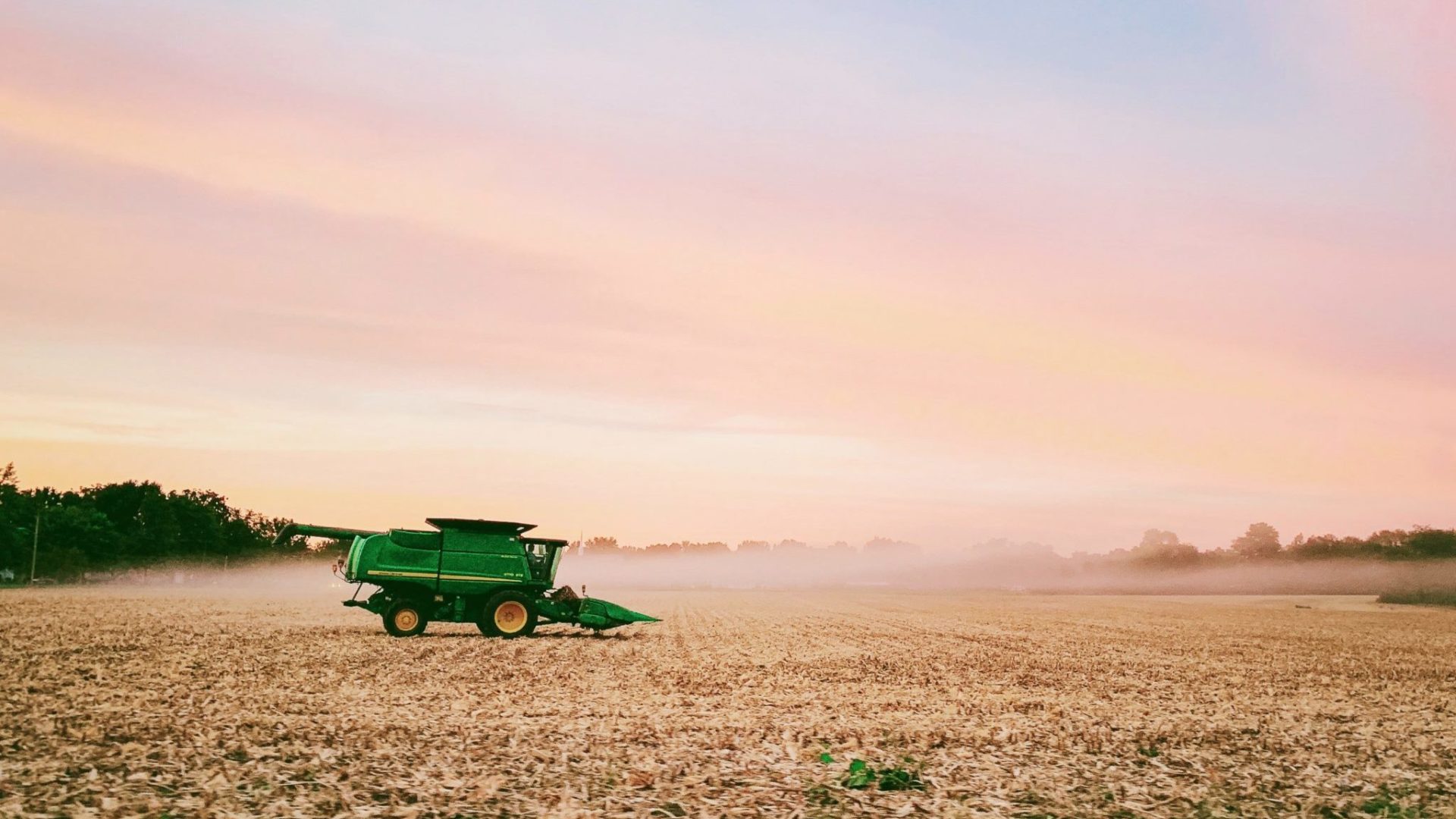More than a decade ago, Michael Pollan’s “The Omnivore’s Dilemma” challenged Americans to think deeply about the global forces behind each meal. Pollan urged readers to “vote with your fork,” opting out of foods linked to animal abuse or pollution, instead replacing them with fresher food grown more locally and sustainably.
In his new book “Perilous Bounty: The Looming Collapse of American Farming and How We Can Prevent It,” Tom Philpott argues things have grown “considerably bleaker” since then. An individual’s shift to a vegan diet or shopping at a farmers market can’t stand up to the macro forces that shape industrial agriculture, from government subsidies to the consolidation of agrochemical firms. This incisive and detailed account shows how these business and political trends have strained resources and left farmland at risk from the accelerating effects of climate change.

BOOK REVIEW — “Perilous Bounty: The Looming Collapse of American Farming and How We Can Prevent It,” by Tom Philpott (Bloomsbury, 256 pages).
“If the current ecological unraveling proceeds apace,” he writes, “it will trigger social and ecological disruptions that ‘voting with your fork’ won’t protect you from.”
Philpott, the food and agriculture correspondent for Mother Jones and a former farmer, centers his reporting on California’s Central Valley and the Midwest Corn Belt. Both have been fertile growing spots for centuries: California supports more than a third of the nation’s vegetables and two-thirds of its fruits and nuts, while the rich soil of the Midwest produces the majority of the nation’s corn and soybeans, crops that in turn fuel the nation’s meat markets.
But both juggernaut regions have been overworked to the point of unsustainability. The warming climate that has fueled the West’s record-breaking heatwave and brutal wildfire season has also plunged the region into a two-decade drought that scientists have deemed the worst of the modern era. For farmers, it’s drained the snowpack that should feed their fields; the average amount of snow captured in the Sierra Nevada mountains dropped up to 20 percent between the 1980s and 2000s, and is forecast to decline another 60 percent by 2050. The underground aquifers that are meant to act as a backup in dry years are also no help, as farmers have drained them so much that the ground is literally sinking beneath their feet.
Philpott notes that climate change isn’t just making droughts more severe. It is also increasing the likelihood of California’s other “Big One,” a megaflood that could wipe out wide swaths of the state’s crops. The state is typically due for one every 100 to 200 years (the last was more than 150 years ago), and climate change has only raised the odds, as warmer oceans mean more seawater evaporates into the atmosphere to fall over California. A University of California Los Angeles study found that a megaflood is “more likely than not” by 2060, and even without one, the “precipitation whiplash” of dry seasons followed by especially rainy ones makes California’s conditions more unreliable.
In short, Philpott says, this “apparent triumph of comparative advantage is like the sight of water in a sunbaked desert: a mirage, and a dangerous one for U.S. eaters.”
Philpott’s tour of the Corn Belt — where crops cover an area almost the size of California — is equally worrisome. Pushed by federal subsidies, farmers there have largely moved away from planting traditional “cover crops” that shield the land from heavy spring rains. The result has been a steady and rapid erosion of the most fertile topsoil, which is swept as far away as the Gulf of Mexico. The same region was in the headlines in August after a powerful storm known as a derecho wiped out millions of acres of corn and soybean.
As is sometimes the case with climate science, “Perilous Bounty” can feel overwhelmingly head spinning. (To say nothing of the economic forces Philpott traces; a single chapter on California manages to rope in the Chinese nut market, the investment fund TIAA and Harvard University’s endowment.) But the book is grounded in the stories of farmers living through these challenges, and they also offer some measure of hope.
With particular empathy to the mid-sized farms most vulnerable to industry consolidation, he profiles the seemingly common-sense conservation work that is already showing results. The book spends time with Tom Frantzen, an Iowa farmer described as a “Corn Belt outcast” for mixing in rye crops with his normal soy and corn rotation. Even though the idea is simple and elegant — diversity on land once prized for it — Philpott paints it as far too rare.
The conversation Pollan started a decade ago linking food to climate change has been slow to develop. A July poll from the Yale Center on Climate Change Communication found that nearly a quarter of Americans did not think that beef or dairy products contributed to global warming, and nearly two-thirds said they “rarely” or “never” seek out information on the environmental impact of their food. Most consumers are still priced out of organic produce. Often the discussion around sustainable food focuses on headline-grabbing fad diets or meat replacements, like that covered in this summer’s “Billion Dollar Burger,” Chase Purdy’s chronicle of the efforts to create lab-grown beef.
“Perilous Bounty” has little interest in those trends; Philpott even points out that the popular plant-based Impossible Burger, the climate-friendly beef alternative on some fast food menus, relies on soy protein concentrate that comes from the Corn Belt. “The revolution we need likely will not come through the drive-through window at Burger King,” he writes.
Instead, “Perilous Bounty” makes the case for systemic change. That means a political discussion that recognizes how severely climate change is imperiling farmers. It means industry-wide shifts that distribute growing to new regions, instead of consolidating them in a handful of states. It also requires an administration that promotes policies incentivizing farmers to grow what’s best for the land, rather than squeeze ever-lower profits from subsidized crops.
Philpott is grim about the Trump administration, but notes encouragingly that the proposed Green New Deal would “eliminate pollution and greenhouse gas emissions from the agriculture sector” through support of family farms and sustainable land use practices. He also writes approvingly of plans by former presidential candidates Bernie Sanders and Elizabeth Warren to crack down on big agribusiness and reform the industry through supply side policies.
Philpott’s book was finished before Joe Biden became the Democratic nominee, but even the former vice president has talked up policies he might approve of. Biden’s $2 trillion climate plan includes language on sustainable agriculture, including funding research on precision agriculture and new crops, and a new market that would reward farmers for sequestering carbon on their land and reducing greenhouse gas emissions.
Outside of the Midwest, those incentives may not move elections. But Philpott’s book should make climate-concerned voters take a second look, and bring “voting with their fork” to an even bigger stage.
Jason Plautz is a Colorado-based reporter covering energy and environment policy.










